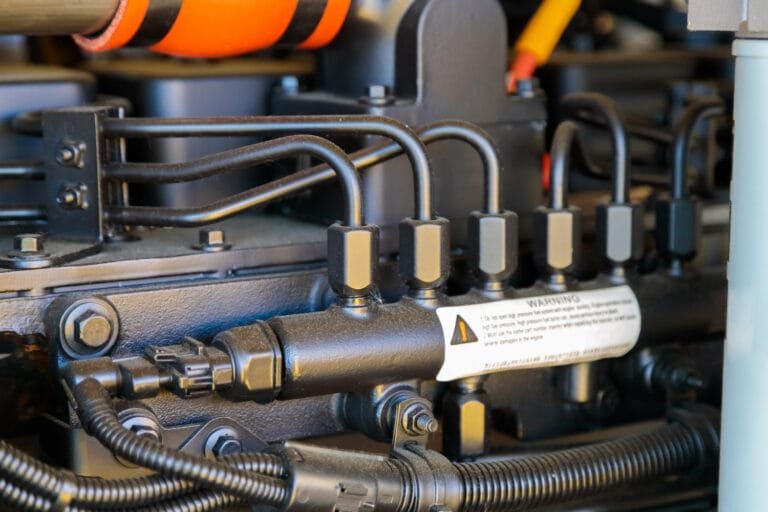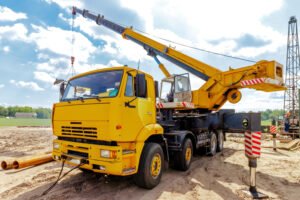Hydraulic systems are the lifeblood of many industrial operations. From heavy machinery in construction and manufacturing to material handling equipment and production lines, hydraulics deliver the force needed to get the job done. But when these systems fail—especially unexpectedly—operations can grind to a halt, costing thousands in lost productivity and repair costs.
Handling hydraulic system failures quickly and effectively is crucial for minimizing downtime and avoiding extended disruptions. In this in-depth guide, we’ll explore the steps you should take the moment a failure occurs, best practices for fast diagnosis and repair, and how to proactively prevent future breakdowns.
Understanding the Importance of Fast Response in Hydraulic Failures
Hydraulic systems operate under high pressure and often support mission-critical functions. A failure could mean:
-
Stalled production lines
-
Idle equipment and labor
-
Safety hazards
-
Loss of revenue
-
Project delays
Time is money. The faster you respond, the less damage and financial loss you’re likely to suffer. But speed without precision is dangerous. The goal is rapid but safe, accurate action.
Common Causes of Hydraulic System Failures
Knowing what commonly goes wrong helps you diagnose and fix issues faster. Here are the most frequent culprits:
Fluid Contamination
-
Dirt, water, metal shavings, or sludge in the hydraulic fluid
-
Leads to internal wear, valve sticking, and pump failure
Hose or Seal Leaks
-
Caused by wear, pressure spikes, or poor fittings
-
Leaks can lead to pressure loss and equipment inefficiency
Overheating
-
Caused by low fluid levels, clogged filters, or overuse
-
Heat degrades seals, oil, and components
Pump or Motor Failure
-
Usually results from wear, overheating, or fluid starvation
-
Can cause full system shutdown
Air Ingress (Aeration)
-
Air entering the system through cracked lines or poor connections
-
Causes noise, jerky operation, and cavitation damage
Immediate Action: What to Do When a Failure Happens
When a hydraulic failure occurs, follow these steps immediately to assess and control the situation:
Stop Operation
-
Power down the system to prevent further damage
-
Isolate equipment if needed
-
Activate emergency stop protocols if applicable
Secure the Area
-
Prevent unauthorized access
-
Contain any spills using absorbents or drip trays
-
Identify any active leaks or hazards
Communicate
-
Inform supervisors, operators, and maintenance teams
-
Record time and details of the failure for reporting
Prepare for Inspection
-
Don appropriate PPE (gloves, goggles, etc.)
-
Ensure pressure is fully relieved before disassembly
-
Gather tools and documentation (schematics, maintenance logs)
Rapid Diagnosis: How to Identify the Issue Quickly
Fast diagnosis is key to fast repair. Here’s how to streamline your inspection for industrial hydraulic system failures:
Visual Inspection
-
Look for obvious leaks, broken hoses, or damaged fittings
-
Check fluid levels and color (milky fluid indicates water ingress)
-
Look for signs of overheating (scorched hoses, dark oil)
Listen for Clues
-
Whining = pump cavitation
-
Hissing = leaks
-
Jerking = aeration or fluid contamination
Check Filters and Screens
-
Dirty or clogged filters restrict flow
-
Check bypass indicators
Examine Pressure Readings
-
Use pressure gauges at key points (pump, actuators)
-
Sudden drops may indicate internal bypassing or line failure
Use Thermal Imaging
-
Identify hotspots in valves or pumps
-
Pinpoint overheating components in real time
Use a Diagnostic Flow Meter
-
Test flow rates and compare to manufacturer specs
-
Detect internal leakage or pump wear
Emergency Repair Steps
Once the issue is identified, repairs should begin immediately:
Leaks
-
Replace or tighten fittings, seals, or hoses
-
Use compatible parts only
-
Test under pressure before resuming operation
Contaminated Fluid
-
Flush the system thoroughly
-
Replace with OEM-approved hydraulic fluid
-
Install new filters
Failed Pump or Motor
-
Replace with a serviceable spare or rebuilt unit
-
Align and torque according to spec
-
Refill and bleed system
Valve or Actuator Failure
-
Disassemble and inspect for sticking or wear
-
Clean and reseal as needed
-
Replace faulty spools or cartridges
Air in the System
-
Bleed lines and cylinders methodically
-
Use air bleed valves or slow-cycle actuators
-
Inspect for cracked fittings or suction-side leaks
Sourcing Emergency Hydraulic Repair Services
If in-house repair isn’t an option or you lack the right equipment, call in professional hydraulic repair specialists who offer:
-
24/7 emergency response
-
Mobile hydraulic repair units
-
On-site troubleshooting and diagnostics
-
Replacement parts
-
Certified technicians
What to Look for in a Provider:
-
Fast response time
-
Inventory of critical parts
-
Certified and insured technicians
-
Experience with your specific machinery or system
-
Positive reviews and references
Pro tip: Partner with a reliable provider in advance so you’re not scrambling during a crisis.
Minimizing Downtime During Repairs
Time is money in industrial environments. Here’s how to speed up the repair process:
-
Keep spare parts on site (seals, hoses, filters)
-
Store hydraulic schematics in an easy-to-access digital format
-
Maintain service logs for fast diagnostics
-
Train operators to detect early warning signs
-
Assign an emergency response team trained in lockout/tagout, cleanup, and containment
Recommissioning the System After Repairs
Don’t rush back into operation. Follow these steps:
Inspect All Repairs
-
Double-check fittings, components, and fasteners
-
Look for overlooked leaks or issues
Bleed and Test
-
Remove all air
-
Cycle the system slowly and monitor for irregularities
Monitor Fluid Levels and Temperature
-
Ensure reservoir is full
-
Check for overheating during the first run
Record and Report
-
Document the repair, technician involved, parts used, and root cause
-
Report to maintenance and safety teams
Root Cause Analysis: Prevent It from Happening Again
Fixing the problem is only half the battle. Preventing it from recurring is key to long-term success.
Ask These Questions:
-
Was the failure due to wear, misuse, or lack of maintenance?
-
Did the fluid quality play a role?
-
Was the component near the end of its lifecycle?
-
Was the system overloaded or operated beyond design specs?
Implement Corrective Actions:
-
Update maintenance schedules
-
Add filtration or cooling systems
-
Train staff on proper operation
-
Replace aged components preemptively
Preventive Measures to Avoid Industrial Hydraulic System Failures
An ounce of prevention is worth a ton of downtime. Here’s what to do regularly:
Daily:
-
Check fluid levels
-
Inspect for visible leaks
-
Listen for unusual sounds
Weekly:
-
Clean or replace filters
-
Check hose condition
-
Verify pressure readings
Monthly:
-
Sample hydraulic fluid for contamination
-
Test system pressure and flow
-
Grease moving parts and linkages
Annually:
-
Replace seals and wear components
-
Perform full system flush
-
Review usage logs for patterns of wear
Investing in a strong maintenance routine is your best defense against emergency repairs.
Alltracon: The Emergency Repair Partner You Can Rely On
Alltracon specializes in emergency industrial repair, including hydraulic system troubleshooting, component replacement, and on-site restoration. With 24/7 mobile response teams, certified technicians, and a commitment to fast, reliable service, Alltracon keeps your operations moving. When breakdowns strike, Alltracon brings the fix—fast, safe, and right the first time.
Final Thoughts
Industrial hydraulic system failures can bring operations to a grinding halt, but with the right mix of preparation, training, and rapid response, downtime can be minimized. Whether you’re handling repairs in-house or calling in professionals, the key is acting fast—but smart.
Start by understanding the failure, then take immediate, safe steps to isolate, diagnose, and fix the issue. Finally, learn from each incident to prevent it from happening again.
In high-pressure environments, efficiency is survival—and nowhere is that truer than in emergency hydraulic repairs.











